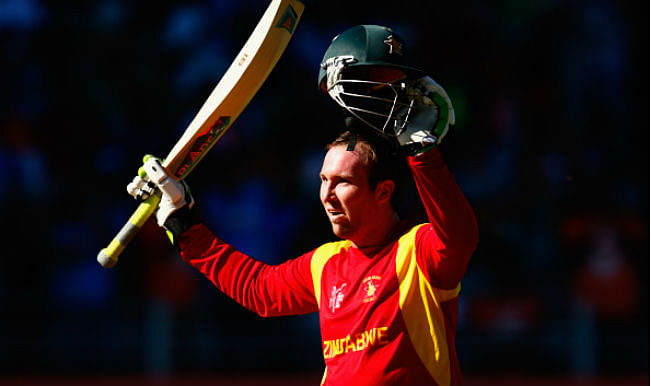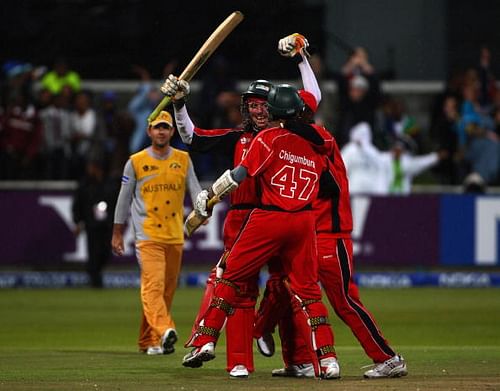
Too bad Brendan, you deserved more

On Saturday, Brendan Taylor, Zimbawe’s skipper played his last game for the national team against India. Though he could not lead his team to a victory, he signed off in style with the bat as he smashed 138 runs off just 110 balls. His innings was an exhibition of exhilarating strokeplay as he carted the Indian bowlers around the park. In the process, Taylor went past Alastair Campbell’s tally of 5185 runs and became the third highest run-scorer for Zimbabwe in ODI’s. He also went past Campbell’s record of 7 centuries to become the leading centurion for Zimbabwe in ODI’s.
The reason why the 29-year old is retiring is that he has signed a 3-year Kolpak deal with English county Nottinghamshire which makes him ineligible to play for Zimbabwe while the contract is in effect. In his own words, it is the biggest decision of his life which he had to take keeping his family in mind. He was also pretty disappointed with the fact that he will not get the chance to don the Zimbabwe jersey again.
It was very disheartening to see the best player of a country having to abandon his team for the purpose of job security, especially when it looked as if the Zimbabwean team was heading north under him. One cannot help but imagine the plight of Indian cricket if some of their stars like MS Dhoni and Virat Kohli were to make an exodus like this.
Let us take a look at how ZImbabwean cricket has been unfair to their hero:
The Zimbabwean Cricket Muddle of the past decade:
The Zimbabwean dream team of the late nineties had the likes of Andy Flower, Grant Flower, Alistair Campbell, Heath Streak, Andy Blignaut and Neil Johnson. This team managed to beat every Test playing nation except Australia. However, a political breakdown of the country followed by increasing politicization of cricket, including selectorial policy based on racism prompted the premature retirements of many of these players.
In 2005, the Zimbabwean team was voluntarily suspended from Test cricket by its board with encouragement from the ICC as it struggled to put 11 quality players on the field. Over the years, there were a fair share of disagreements between the board and the players as Zimbabwean Cricket reached it’s nadir. All of this coincided with the worsening of Zimbabwe’s financial condition.
The Zimbawean Board suffered the brunt of it as it could not pay its players. In fact, the Zimbabwean team struggled to attract any sponsors which had a bearing on their domestic circuit leading to the cancellation of many tournaments. The Zimbabwean team tours were cancelled, postponed or went untelevised.
Taylor: The Man who stitched Zimbabwean Cricket
Amidst the exodus of key players, Taylor made his debut for Zimbabwe in 2004. Right from the start, he was a steady performer. However, his ticket to fame was when he engineered Zimbabwe’s victory over Australia in the 2007 World T20. Thereafter, he became one of the lynchpins of Zimbabwe’s batting as he consistently scored runs in all formats.

In 2011, he was handed over the reins of the team. Under him, Zimbabwe made a successful return to Test cricket after 6 years of self-imposed exile. He led them to Test wins over Pakistan and Bangladesh at home. Zimbabwe also managed to pull off a few surprise wins in ODIs against the likes of Australia, New Zealand and Pakistan under his captaincy. It seemed as if a newer, more competent Zimbabwean team was being built around him.
For teams like Zimbabwe, players like Taylor are hard to come by. The exit of such players leaves a big void because teams are built around them. An example of this is Zimbabwe’s batting performance in the game against India. When Taylor was at the crease, they looked like going past 300. However, his departure seemed to have opened the floodgates as they lost their last 5 wickets for just 52 runs. While this example is only for one particular game, one can relate to the larger picture by looking at it. In a way, Taylor’s exit might lead to another period of downfall for Zimbabwean Cricket just when it looked like it was heading in the right direction.
No Rewards for hard work:
Like every budding cricketer, Taylor dreamt of playing for his country some day and was one of the very few who lived his dream. However, he was not rewarded monetarily for the massive contribution he made to the team and although he waited a long time for the situation to improve, that never happened. It would be worth noting that the Zimbabwean players have always had issues with the board regarding the salaries. Despite wanting to play for his country, an uncertain future has led to Taylor opting for county cricket.